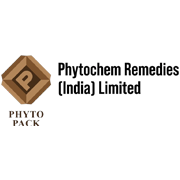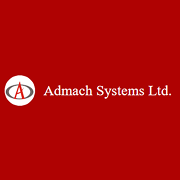Mainboard IPOs
| Company Name | Type | Open Date | Close Date | Issue Price | Overall subscription | |
|---|---|---|---|---|---|---|
Gujarat Kidney and Super Speciality | Mainboard | 22 Dec 2025 | 24 Dec 2025 | ₹108 - ₹114 | -- | |
MARC Technocrats | SME | 17 Dec 2025 | 19 Dec 2025 | ₹88 - ₹93 | 1.74x | |
Global Ocean Logistics | SME | 17 Dec 2025 | 19 Dec 2025 | ₹74 - ₹78 | 2.80x | |
Phytochem Remedies | SME | 18 Dec 2025 | 22 Dec 2025 | ₹98 - ₹98 | -- | |
Shyam Dhani Industries | SME | 22 Dec 2025 | 24 Dec 2025 | ₹65 - ₹70 | -- | |
Dachepalli Publishers | SME | 22 Dec 2025 | 24 Dec 2025 | ₹100 - ₹102 | -- | |
EPW India | SME | 22 Dec 2025 | 24 Dec 2025 | ₹95 - ₹97 | -- | |
Admach Systems | SME | 23 Dec 2025 | 26 Dec 2025 | ₹227 - ₹239 | -- |
| Company Name | Type | Opening Date | |
|---|---|---|---|
| Mainboard | To be announced | ||
| Mainboard | To be announced | IPO Doc | |
| Mainboard | To be announced | ||
| Mainboard | To be announced | ||
| Mainboard | To be announced |
| Company Name | Type | Open Date | Close Date | Listing Date | Issue Price | Listing Price | Overall subscription | Performance | Allotment Status |
|---|---|---|---|---|---|---|---|---|---|
KSH International | Mainboard | 16 Dec 2025 | 18 Dec 2025 | 23 Dec 2025 | ₹384.00 | -- | 0.80x | -- | Check |
Neptune Logitek | SME | 15 Dec 2025 | 17 Dec 2025 | 22 Dec 2025 | ₹126.00 | -- | -- | -- | Check |
Ashwini Container Movers | SME | 12 Dec 2025 | 16 Dec 2025 | 19 Dec 2025 | ₹142.00 | ₹147.00 | 1.64x | +3.52% | Check |
ICICI Prudential AMC | Mainboard | 12 Dec 2025 | 16 Dec 2025 | 19 Dec 2025 | ₹2,165.00 | ₹2,600.00 | 39.09x | +20.09% | Check |
Exim Routes | SME | 12 Dec 2025 | 16 Dec 2025 | 19 Dec 2025 | ₹88.00 | ₹110.00 | 14.06x | +25.00% | Check |
About Mainboard IPOs
What is a Mainboard IPO?
A Mainboard Initial Public Offering (IPO) is the process in which large private companies sell their shares to the public for the first time to raise funds. These shares are listed on the major stock exchanges like the National Stock Exchange (NSE) and the BSE (formerly known as the Bombay Stock Exchange).
The companies opting for mainboard IPOs are generally large corporations having a higher market capitalization, often exceeding ₹500 crore. However, to qualify as a mainboard IPO, these company must have a post-issue paid-up capital of ₹10 crore and must meet the specific eligibility criteria set by SEBI and the respective stock exchanges (NSE and BSE).
Key Characteristics of Mainboard IPO
- Larger Issue Size: Mainboard IPOs are launched by large and established companies with a post-issue paid-up capital of ₹10 crore or more. These companies usually have a strong business and steady financial performance.
- Lists on Major Exchanges: The shares from Mainboard IPOs are listed and traded on major stock exchanges like the National Stock Exchange (NSE) and Bombay Stock Exchange (BSE).
- Wide Investor Participation: It is open to all investors and can be applied for by retail investors, high-net-worth individuals (HNIs), and institutional investors, making them widely accessible.
- Have a set price band: Most Mainboard IPOs follow a book-building process, where investors bid within a set price range.
- Higher liquidity: Since these stocks trade on major exchanges, they generally offer better liquidity post-listing.
Why Apply for Mainboard IPO?
- Investing in a mainboard IPO lets you own shares of large, established companies listed on major exchanges (NSE and BSE), offering transparency, liquidity, and potential long-term growth.
- Mainboard IPOs let you invest across different sectors and companies, helping you spread risk and build a balanced portfolio.
- Applying for an IPO is free as there are no brokerage or regulatory fees involved, unlike buying shares on the secondary market.
- Once listed, the shares of mainboard companies are traded on major stock exchanges like NSE and BSE, offering high liquidity to investors. This means you can easily buy or sell your shares anytime during market hours.
- Mainboard IPOs follow strict SEBI and exchange guidelines where the companies must share detailed financial and business information, helping you make informed decisions.
How to Apply for Mainboard IPO on Groww?
Applying for a Mainboard IPO on Groww is simple and completely online:
- Login to Groww: Open the Groww app or website and sign in to your account.
- Go to the IPO section: After signing in, navigate to the ‘IPO’ tab under the ‘Stocks’ section.
- Select the IPO: Browse through the list of upcoming and open IPOs. Select the preferred Mainboard IPO from the list.
- Enter bid details: Choose the number of lots and bid price (or apply at cut-off).
- Confirm and pay: Complete your UPI payment through your registered UPI ID.
- Track application: You can check the IPO application and allotment status directly on Groww.
Frequently Asked Questions
One of the primary difference between main board IPO and SME IPO is that a mainboard IPO is for larger, well-established companies listed on both stock exchanges (NSE and BSE), while an SME IPO is for smaller and medium-sized enterprises listed on dedicated SME platforms like NSE Emerge or BSE SME. Also, the issue size of a mainboard IPO is larger (generally above ₹25 crore) than that of the SME IPO (often between ₹1 - ₹10 crore).
Yes, you can invest in multiple IPOs at once provided you have sufficient funds in your account and meet the application criteria for each of the IPOs.
You can check the IPO allotment status on the Groww app or website once the allotment is finalized. You can also check it on the designated stock exchange’s website as well as on the registrar’s official website by entering your PAN or application number.
If the IPO shares are not allotted to you, the blocked amount in your bank account is automatically unblocked or refunded within a few working days. You can then use the same funds to apply for other upcoming IPOs.
















